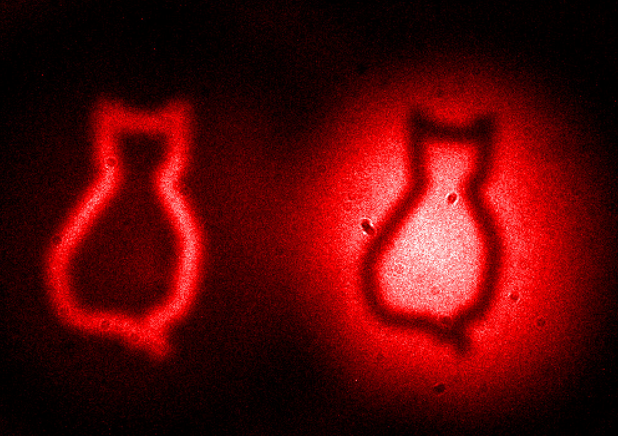
There’s been a lot of press in the past few years about the potential impact of quantum technologies. The casual observer exposed to the more breathless sort of reporting could be forgiven for thinking that the widespread adoption of revolutionary new technologies is just around the corner. Since there are plenty of applications of quantum technologies in the defence area, we thought it was worth taking a look at the developmental status of some of the more promising ones in our new ASPI report From little things: quantum technologies and their application to defence.
Before setting out our conclusions, it’s worth noting that any future ‘quantum revolution’ won’t be setting a precedent. Two devices with quantum effects at their heart have already impacted just about every facet of modern life. When the transistor replaced valves in electronic devices, it enabled the development of microcircuitry, now ubiquitous in communication, computing, sensor and navigation systems. There would be no smartphones if electrons couldn’t quantum-mechanically tunnel their way through ‘impassable’ barriers. Similarly, millennials would have to be able to read maps if atomic clocks hadn’t made GPS possible. So, to some extent the quest for new practical quantum technologies is really a search for the next big little thing.
We examined four technology areas that we judged to be the most likely to produce useful devices in the foreseeable future. Perhaps surprisingly, given that it gets the lion’s share of popular exposure, we found that quantum computing was the least likely of them to become a practical reality in the short term. That’s not to say that quantum computing research isn’t important; in our judgement it’s the technology with the biggest potential impact. The speedups that are theoretically possible from quantum computing, if realised in a practical machine, could provide a performance boost equivalent to the past 40 years of developments in computing power and speed. Unlike the hardware, the rhetoric is certainly running at full speed, and terms like ‘quantum supremacy’ have hyped up expectations.
But that’s all based on a big ‘if’. No large-scale reprogrammable quantum computer exists today. There are small-scale ‘proof of concept’ demonstrations, and theoretical work has shown that no law of nature precludes the development of a universal quantum computer. That’s the good news. The bad news is that so far there’s no indication that the laws of nature have conspired to make it easy to build such a device. As an analogue, we’d point to the generation of controllable energy from nuclear fusion. That’s also well understood from a theoretical point of view. No law of nature rules out a fusion reactor, and there have been (fleeting) proof-of-concept demonstrations of net energy generation in laboratories. But, despite a lot of effort and investment, it has proven to be prohibitively difficult to implement as a practical means of energy production. Fusion power has been ‘a few decades away’ for much more than a few decades. Some engineering problems are just really hard. Quantum computing might also be one of those.
Quantum communication seems to be much easier to implement, to the point where practical systems are already in use, including China’s launch of the first quantum communication satellite. We categorise this technology as ‘useful but not game-changing’. The maturation of quantum communication will ensure that secure communication channels will be available in the future, even if classical cryptographic methods become vulnerable to attack—from quantum computers, for example. But there are many cryptographic systems in use today that are secure to all intents and purposes, and some are ‘quantum’ proof. So, in a sense, quantum communication is a ‘conservative’ technology in that it will help preserve existing practices by future-proofing them against technology developments. It’s probably no coincidence that China is leading the push, as it allows it to offset the likely advantage the US has in cryptanalytic techniques.
When quantum radar makes it into the popular press, it’s usually accompanied by headlines declaring the imminent demise of stealth technology. Not everyone is convinced about that, but we found that quantum radars (there are two broad classes) are likely to deliver useful performance boosts against all classes of targets. But, again, there are lots of technical obstacles to be overcome before a practical system can get near the theoretically attainable gains. Even then we wouldn’t predict the end of stealth. After all, being hard to see is always going to be preferable to being easy to see.
We were most impressed by a class of technologies we lump together as quantum sensors. The source of most of the problems of the technologies described is a requirement to keep systems isolated from the wider world to get the best performance. But for some sensors, that tendency to interact with the external world is a positive feature and makes possible quantum devices that are sensitive to tiny changes in magnetic, electric and gravitational fields, allowing them to make precise measurements of those quantities. Along with advances in atomic clocks, which will allow for much more precise positional measurements, we think that a new generation of sensors and navigational devices will improve the performance of almost every significant military system. But our judgement is that it’s improbable that any one technology will deliver a war-winning ‘silver bullet’ effect. And the measure–countermeasure battle will continue apace. For example, a swarm of small drones capable of generating a submarine-like magnetic signature could be deployed to foil sensitive quantum magnetometers forming part of an anti-submarine screen.
Finally, we make some judgements about the strategic impact of these new devices. The bottom line is that nobody has a monopoly on the good ideas or the required expertise, so we think it’s unlikely that any one country will take a big lead and stay there.

